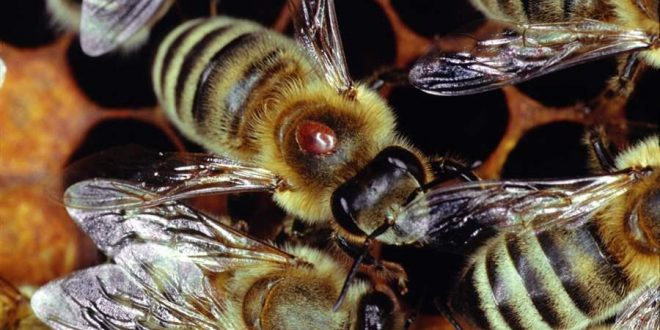Scientists with the New Hampshire Agricultural Experiment Station have completed the first assessment of the state’s native bee population, providing wildlife experts with the first comprehensive list of the Granite State’s more than 100 native bees that includes nearly 20 bee species that had not been previously documented in the state.
Sandra Rehan, assistant professor of biological sciences at the University of New Hampshire, and Erika Tucker, USDA research fellow, have identified a broad diversity of species of wild bees in the state, including 17 bee species newly recorded in the state. The research is part of the experiment station-funded research project “Sustainable Solutions to Problems Affecting Bee Health.”
“New Hampshire has a high bee species richness compared to similar biological surveys conducted in eastern North America. Our bee collection efforts recorded 118 species, more than a quarter of the species currently present in the Northeast, if not more considering recent bee declines,” said Rehan, who oversees the UNH Bee Lab.
While most bees collected in high abundance were sweat bees, the most abundant species was the common Eastern bumble bee. The common Eastern bumble bee is a significant pollinator of many greenhouse crops and often is used as a managed bee to help pollinate crops. Historically, it has been a common species, and since the new millennium, this species has become even more widespread, doubling and sometimes even tripling in abundance across North American bee surveys.
Sweat bees are common locally on many crops and flowering plant species, including apple, milkweed, coneflowers and clover. Sweat bees are found worldwide; approximately 70 species live in New Hampshire.
“These two bees, the sweat bee and common Eastern bumble bee, should be considered keystone species in New Hampshire. While neither species visits the entire floral suite sampled in this study, the loss of one or both species could cause serious changes to the New Hampshire ecosystem,” Rehan said.
Researchers found that white clover attracted the largest abundance of bees, and red clover supported the highest diversity of bees.
“We found flower diversity is important for supporting the bee community throughout the season. These data suggest that increasing the diversity of early season blooming flowers may have a positive impact on the native bee community and possibly strengthen stability of plant-pollinator network interactions early in the season,” she said.
Rehan and her lab are developing a database of 150 years of museum bee records to better understand the former ranges and population numbers for the more than 100 species identified. This will help determine the status of bees in terms of common species stability, the disappearance of rare and endangered species, and the introduction of new species.
“The aim of our research is to restore and rejuvenate healthy plant pollinator habitats to increase local pollinator populations. By educating New Hampshire municipalities, farmers and policymakers about native pollinators and habitat preferences, we can encourage the regional and national authorities to create and maintain native bee habitats. Bee boxes, wild flowers and unmowed pastures are but a few ways to improve healthy pollinator communities,” she said.
Bees are important pollinators of food crops and natural ecosystems. The value of pollination to agriculture is estimated at more than $200 billion a year worldwide. The abundance of and diversity of pollinators are declining in many agricultural landscapes across the U.S. Given this importance, widespread declines in pollinator diversity have led to concern about a global pollinator crisis. The National Research Council has called for regional, national and international monitoring programs to allow tracking the status and trends of pollinators.
Going forward, the researchers plan to further study species at risk of extinction or with low genetic variability, which may be indicative of possible decline. Population genomic screening will reveal those species in threat of decline due to low genetic variability.
“These data, in combination with our ongoing collections and ecological modeling efforts, will provide unprecedented insights into the status and sustainability of bees in the region. The ecological assessment of bees in New Hampshire will reach year three this summer. With these combined data, we can determine environmental factors that impact the presence, absence, and abundance of bee species across many landscapes in the state,” Rehan said.
“Conserving and maintaining a diverse assemblage of wild bees is essential for a healthy and functioning ecosystem, as species are uniquely evolved to deliver specific plant-pollination requirements. Understanding the biology and ecology of bees in poorly studied regions is the first step towards conservation,” she said.
Agencies/Canadajournal/Press Releases
 Canada Journal – News of the World Articles and videos to bring you the biggest Canadian news stories from across the country every day
Canada Journal – News of the World Articles and videos to bring you the biggest Canadian news stories from across the country every day



